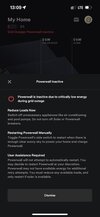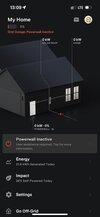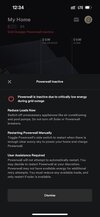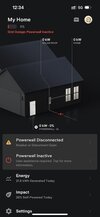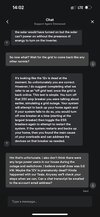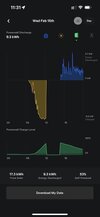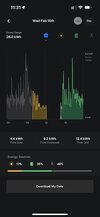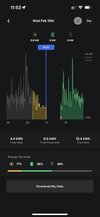This happened to me again today. The power went out in the neighborhood and the Powerwalls did not pick up the loads. I was not home at the time and this is what the app showed.
View attachment 915976
The information shown when clicking on the "Tap for more information" was not helpful. Knowing that the app previously indicated that the house load was too much, but my house loads are small, I first turned off the main breaker to be sure that it wasn't the neighborhood load, just in case the Gateway switch wasn't opening. It was too rainy and windy to open the Gateway and get eyes on the switch contacts directly.
I called Tesla Energy Support. I got someone on the phone pretty quickly. They had me toggle one of the rocker switches on the Powerwalls three times OFF & ON. I heard some relays click in the Powerwalls but they did not start up successfully. However, the app changed to "Standby" instead of "Grid Outage: Powerwall Inactive". The phone rep had me turn off most of my breakers to reduce the load. I find this to be ridiculous because the house was running at 1.0kW when the power went out and I have two Powerwalls. Anyway, I did it. Toggling the rocker switch again did nothing. The rep suggested that we had to wait about 5 minutes to see if it was going to work. During that time, the call dropped. So, I just continued on with whatever I could. I pressed "Go Off-Grid" in the app since that had worked for me in the past. It complained that the it could not start because the load was too high. I logged into the Gateway directly through the WiFi from my phone and the LAN connection to the Gateway. My networking stuff is on UPS so it was still working. The web interface to the Gateway also had a "Go Off Grid" button. That one worked. One of the few lights that still had their breaker on turned on immediately. I went back outside and turned on all the breakers that I had turned off, except the main breaker. We ran fine like that for about 2.5 hours until the PG&E power came back on.
When the power came back on, I had to notice that the neighbors' power was back on because the app did not indicate the grid status since I turned off the main breaker. I went back outside and turned on the main breaker. Then I pressed the "Go On-Grid" button in the app. Initially it said something about failing, but almost instantly after that said it was successful. About 10 seconds later I heard the Gateway switch close. A few minutes later, I got the text from PG&E that power was restored.



